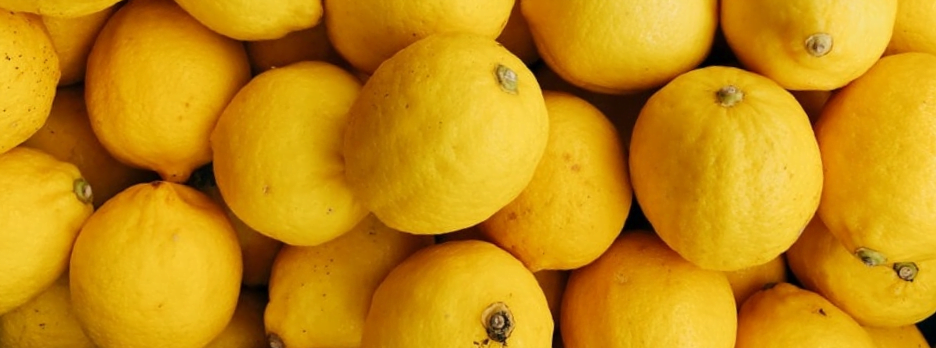How Do Descalers Remove Limescale? How to Get Rid of Limescale

At Star Domestic Cleaners, we know that limescale can be the cause of a lot of headaches if you don’t regularly maintain the appliances at home that have direct contact with water.
You should take extra care of your coffee machine, kettle and boiler as hot water runs through them regularly.
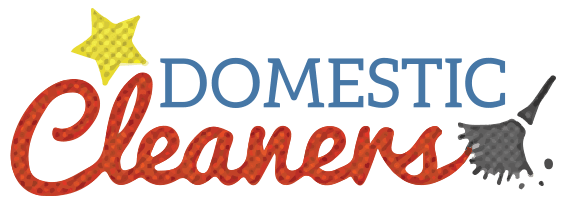
How Each Type of Descaler Deals with Limescale
- Chemical descalers interact with alkaline-carbonate elements through hydrochloric acids or other chemicals
- Water softening method ‘rinses’ the limescale with the help of calcium hydroxide
- Ion-exchange resin replaces the hard ions of calcium and magnesium with soft, sodium and potassium ions.
- Organic descalers such as white vinegar and baking soda remove limescale as their chemical base is acidic or salt which dissolve limescale agents
- Electric water conditioning – uses electromagnetism to reduce the rate at which limescale builds up on any surface
- Mechanical descalers – as the name suggest, this method is done by professional cleaners with special equipment
Now that you know the various types of descalers, let’s find out how each one works in more details:
 How Do Chemical Descalers Work?
How Do Chemical Descalers Work?
Acid-based descaling agents are the most common descalers you can find at the stores. They use compounds like hydrochloric acid to interact with the built up of alkaline carbonate elements (limescale) and dissolve them. The chemical reaction produces a mixture of soluble salt and carbon dioxide gas (CO2 ) which is then easily cleaned.
Descaling by Water Softening
Another way to protect your appliances from limescalе is to reduce the hardness of the water coming in your property. To do so, you can use various methods of water softening such as:
Lime Softening, Also Known as Clark’s Method
Through the precipitation process, lime water (calcium hydroxide) interacts with calcium and magnesium ions, ‘rinsing’ them from the treated area. It also helps remove any microorganisms or other organic residues.
Note: this method should be done by a professional who knows how to use the special equipment needed.
Ion-exchange Resin
A method where the ‘hard’ magnesium and calcium ions are replaced by sodium and potassium ions through the process of reverse osmosis.
Wait, What is Reverse Osmosis?
By the use of a special membrane, this process uses hydrostatic pressure gradients which selectively omit only pure water molecules. These membranes have a limited timespan and should be replaced regularly.
Organic Descalers – Lemon, Baking Soda, White Vinegar and More
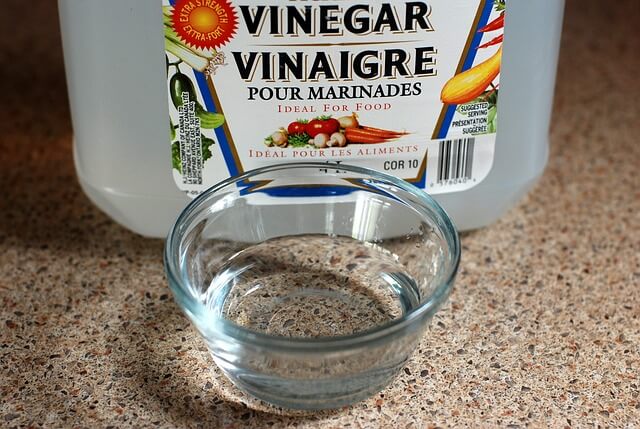
Here comes the saviour of home cleaning, white vinegar. The reason it is so universally used is it contains around 5 to 20% acetic acid and is fully soluble in water, making it the perfect companion for cleaning most stains at home. You may not like the way it smells, but it is dirt cheap and will become your best friend.
Another organic limescale descaler is lemon acid or just lemon. Again, it contains acid which can break down the hard compounds in the scale. You can also use lemon to clean your oven, too.
Lastly, baking soda (sodium bicarbonate) is a great organic choice to take care of limescale. Baking soda is a type of salt (go ahead and try it) and it tastes like a milder version of cooking salt. Its high pH level makes it good for home cleaning and its absorbing qualities help to clean residue from any surface.
How do Mechanical Descalers Remove Calcium Scale?
Mechanical descaling, as the name suggests, requires the manual cleaning of the affected areas. It is advisable to use an expert for manual descaling as the job requires experience for each type of appliance that will be descaled.
In general, it takes more time and money than the chemical based method.
Limescale cleaning with Electric Water Conditioning Method
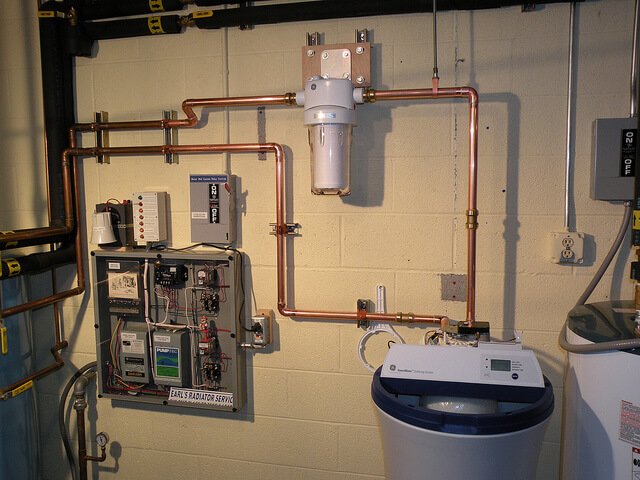
The way electric water conditioners reduce the buildup of calcium scales is by changing the shape and behaviour of the calcium in your tap water. This method is most commonly used for protection of pipes such as the ones on your heating system and boiler.
A digital device is installed externally, and by wrapping a coil around the main water pipe, it creates a magnetic force which changes the physical shape of the calcium molecules, making them less likely to attach to the inner surface of the pipe.
Note: Electric water conditioners do not remove the alkaline compounds in the water stream, they simply reduce the amount of scaling on the affected surfaces. On the other hand, this method does not put any salts in the water stream. This is a major benefit compared to chemical descalers. The daily intake of sodium, for example, should not exceed 2,300 mg. The
Are Descaling Agents Safe to Use?
Descaling agents which use chemicals such as acid to clean calcium scale should be used with caution as some of them may cause skin or eye irritation. Read the description of each product carefully to learn how to properly use it.
What really is limescale? Types of limescale
Limescale is the buildup of alkaline elements in metal parts of various appliances or pipes where constant interaction with water is present.
What is the Difference Between Soft & Hard Water
It is very simple, if the amount of naturally occurring calcium, magnesium or other similar minerals in your tap water is low, then it is soft, if the quantity of these minerals is high, your tap water is hard. The quantity of solids is measured by TDS (Total Dissolved Solids), anything above 200 mg/L is considered hard water.
Think of it this way, when rain falls, the water in the drops is soft as it barely has any mineral molecules in it. When it falls to the ground, however, it goes through rocks such as limestone and chalk and its mineral consistency increases. Elements such as calcium and magnesium become part of its content.
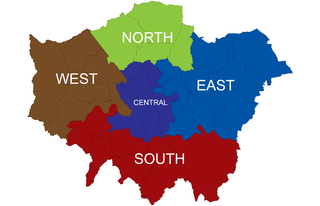
Which are the Areas in London with the Hardest Water?
Depending on where you might live in the Greater London area, the hardness of water is different. The south-east boroughs of Bromley and Bexley have the highest amount of calcium and magnesium in their tap water.
Moving towards the north-west of London, boroughs such as Hillington, Harrow and Barnet have the softest water in the capital. If you’re living there, you’re lucky, as you will have to be much less cautious about the limescale in your home.
Did you know? Mineral water is also hard water!
What Causes Limescale Buildup?
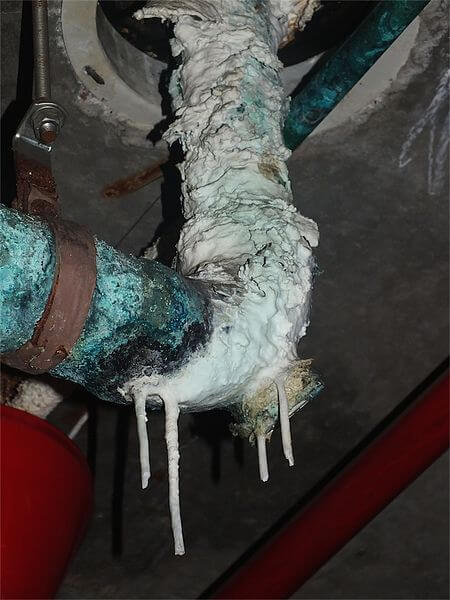
There are various alkaline compounds in hard water which, when interacting with metal surfaces, stick on and create a layer of minerals which in time can become a major nuisance and a headache for any homeowner. Most common compounds causing limescale are magnesium hydroxide, calcium sulphate and calcium carbonate.
Appliances which use hot water, such as boilers, coffee machines and heating systems are extra susceptible to limescale buildup as the heat quickens the process of scaling.
When left untreated, limescale can alter the performance of your appliances, heating system and boiler, reducing their lifespan and increasing your electric bill. The layer of calcium and magnesium inside your pipes acts as an extra layer of insulation, and you don’t want that when it comes to heating your home, as less heat is emitted.
How to Clean Limescale at Home?
Now that you’ve learned all about the types of limescale descalers and how they work, let’s find out how to maintain and clean your home appliances without the use of chemical agents and sure you are trouble-free when it comes to unwanted buildup.
And remember, if you ever feel frustrated with doing the cleaning yourself, know that the one-off cleaning service by Star Domestic Cleaners is designed to satisfy even the most demanding homeowners.
How to Descale Your Coffee Machine or Kettle?
In order to remove limescale from your coffee machine, simply
- Make a 50:50 mixture of white vinegar and water (you can replace the vinegar with lime water)
- If your coffee machine jug has limescale marks, fill it in with the mixture and let it settle for 24 hours. Wash thoroughly with water afterwards.
- If you wish to clean any harder to reach metal parts, detach them from the coffee machine and soak them in.
- If your coffee machine parts can’t be detached, try cleaning them with a cloth damp with water and white vinegar and as thoroughly as you can.
How to Remove Limescale from Your Bathroom?

- The best way to clean all those places where limescale builds up is to spray them with undiluted white vinegar (you can use an empty spray bottle)
- Next, let the vinegar do its magic for a couple of hours.
- Afterwards, clean thoroughly with a cloth.
Note: For those areas with more buildup, damp a paper towel or a piece of cloth in white vinegar and wrap the area such as fittings and taps and clean after a few hours.
How to Remove Limescale from Your Toilet?
Whether it is your toilet tank, toilet rim or the area below the waterline, a mixture of borax and white vinegar will deal even with the most severe limescale buildup.
- Pour an equal amount of each into a bucket and use the solution to scrub all areas thoroughly.
- Leave for a few hours and scrub again if needed and clean with water.
- To prevent calcium scaling in the future, pour a cup of white vinegar in your toilet tank every once in a while.
How to Remove Limescale From Boiler & Heating Pipes?
As the surface affected in this case is hidden and hard to reach, you might want to consult a professional. In order to protect your pipes from scale, you can install a water softener membrane or get an electric water conditioner.
The next best thing is to explore boiler tube cleaning methods and techniques.
How to clean limescale from kitchen sink and glassware?
The method here is similar to the one for cleaning your coffee machine.
- Make a mixture of white vinegar and water (don’t add water if the buildup is severe)
- Polish your dining and kitchen glassware.
- As to the kitchen sink – damp your sink faucet, drain or strainer for a few hours so that the acid dissolves the limescale.
- Wash with water a couple of times and repeat the procedure if the scaling persists
This method is also suitable for any surfaces such as kitchen countertops, bar plots, dish holder, dish racks and any other surfaces which get wet often.
Hey! How to Clean Your Oven with Lemons?
At Domestic Cleaners, we know that when it comes to cleaning dirty ovens professionally, most people simply forget that scrubbing, removing grease and build-ups. But using natural cleaning solutions like lemon is one of many natural and eco-friendly alternatives to detergents. To clean your oven good enough and still avoid dangerous chemicals that are commonly […]
How to Clean Boiler Tubes? Techniques & Advice
Cleaning boiler tubes, maintenance, and care are the best way to get the most out of your unit by preventing overdrive and preserving the piping system. Fewer deposits mean healthier pipes that won’t threaten to leak, burst, or further contaminate your heating infrastructure. The OFTEC, or Oil Fire Technical Association, as well as gas-fired boiler […]

 How Do Chemical Descalers Work?
How Do Chemical Descalers Work?